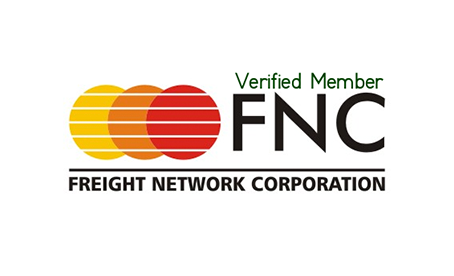We can define supply chains as a set of activities, resources, and partners through which goods can be transported from one place to another efficiently and safely. Supply chains include several elements such as:
Suppliers: Those responsible for providing raw materials or products ready for sale or export.
Producers: Those responsible for converting raw materials into finished or semi-finished products.
Warehouses: Places that store goods awaiting shipment or distribution.
Logistics service providers: responsible for providing services such as packaging, customs clearance, insurance, inspection, tracking and delivery.
Modes of transport: are the methods used to transport goods from one place to another, such as planes, ships, trucks, trains, and others.
Importers: Those who buy goods from abroad and bring them into their country.
Distributors: Those who distribute goods to dealers or final consumers.
The importance of shipping supply chains
Supply chains play a vital role in developing the economy and providing high-quality services to customers. Without it, companies cannot deliver their products to local and global markets quickly and efficiently. Supply chains also contribute to achieving diversity and innovation in products and services, and provide job opportunities for many individuals and institutions involved in production and shipping operations.
How to improve supply chains:
Due to the economic challenges left by the Corona virus crisis, supply chains have become more important than before. Demand for goods and services has increased dramatically, while production and transportation capacity have been affected by movement restrictions and closures. Therefore, shipping companies must follow effective supply chain management and optimization strategies.
Strategies for Shipping Companies to Optimize Supply Chains:
1- Advance planning: Companies must determine their needs for goods and resources, determine the best ways and means to transport them, and estimate the costs and risks associated with that.
2- Cooperation with partners: Companies must establish good relations with the various stakeholders in the supply chain, such as suppliers, distributors, carriers, customs, and others, and exchange information and data periodically and transparently.
3- Use of technology: Companies must use advanced technology to track the movement of goods, manage inventory and orders, improve service quality and increase customer satisfaction.
4- Continuous improvement: Companies must regularly review the performance of supply chains, identify strengths and weaknesses, and make the necessary changes and updates to increase the efficiency of supply chains.
5- Employing graphic analysis techniques: to forecast demand and identify risks and opportunities in supply chains.
6- Using digital platforms: to provide a comprehensive view of the state of supply chains and to facilitate communication and cooperation between partners.
7- Applying green shipping concepts: to reduce the environmental impact of supply chains and increase resource consumption efficiency.
8- Diversifying sources of supply and suppliers: in order to increase flexibility and the ability to adapt to changes in supply chains.
9- Investing in the development of human resources: in order to increase the skills and competencies of workers in supply chains.
The main stages of supply chains:
These are the main stages of supply chains and shipping. These stages are carried out with careful coordination and organization to ensure a smooth and efficient flow of materials and products from the source to the end customers. Details of these stages may vary based on industry type, business model and customer requirements.
Supply Planning:
It is the first and basic stage in the logistics chain management process. This stage aims to analyze and forecast demand, determine the required quantities of materials and products, and determine delivery periods in an effective and sustainable manner. This stage consists of analyzing and forecasting demand, determining the quantities of materials and products required and delivery periods.
Purchasing materials:
It is an important part of the logistics chain management process. This stage aims to purchase the materials needed for production or manufacturing. This includes identifying suitable suppliers and concluding the necessary contracts and agreements.
Manufacturing or assembly:
At this stage, raw materials or components are converted into a product by manufacturing or assembling them in the producing companies' factories, in order to reach a final product ready for shipment. This stage can include production, assembly and manufacturing processes.
Storage and inventory management:
This stage includes storing materials and products in warehouses or distribution centers. Inventory management must also work effectively to ensure the availability of materials and products at the right time and in appropriate quantities and to avoid shortages or accumulation.
Packaging:
This stage is a crucial part of supply and shipping chains, where products are properly packaged and properly secured to ensure their safety and protection during transportation and storage in order to deliver them to customers in good condition.
At this stage, the necessary labels and marks are applied to identify the product and facilitate the shipping process.
Transportation and shipping:
This vital stage consists of choosing and organizing the appropriate means of transportation to transport materials and products from the source to the destination. Different means of transportation can be used, such as trucks, ships, planes, or trains, depending on the distance and desired destination.
Logistics system management:
This stage includes coordinating and managing all operations and transactions related to supply and shipping with the aim of ensuring a smooth and efficient flow of materials and products from the starting point to the destination point. It includes the following processes, tracking shipments, managing documents and customs, and managing the financial and legal processes associated with shipping.
Customer service:
This stage includes meeting customer needs and providing after-sales services, where customer inquiries and problems related to shipping and delivery are dealt with throughout the shipping and product distribution process in order to ensure their satisfaction with the service provided.


 Track Your Shipment
Track Your Shipment
 Online Enquiry
Online Enquiry
 Sign In
Sign In
 English
English

 Alfares Cargo
Alfares Cargo
 Logistic Informations
Logistic Informations
 2023-09-16
2023-09-16












